Narcissus Plant
- March 12, 2024
- 0 comment
The Narcissus plant, often called daffodil, is a type of flower that comes back every spring. It belongs to the Amaryllidaceae family. These flowers are famous for their bright colors and beauty, making them a popular choice for gardens everywhere.
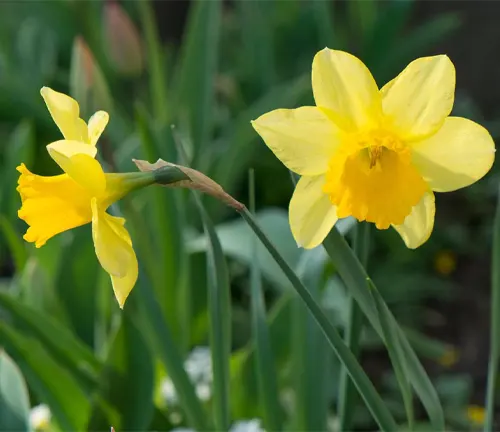
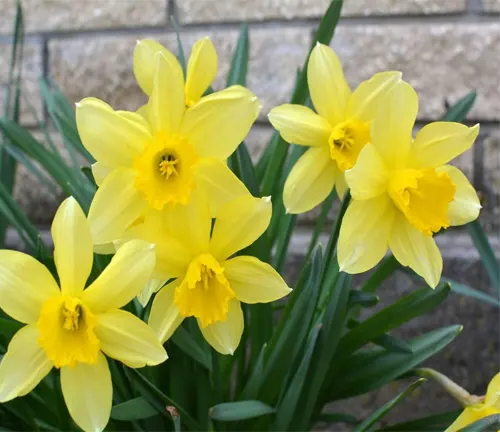
When you see daffodils blooming, it’s a sign that spring has arrived. Their cheerful appearance brings joy to many people and adds a lovely touch to any garden or landscape.
| Characteristics | Description |
| Scientific Name | Narcissus |
| Common Names | Daffodil, Jonquil |
| Family | Amaryllidaceae |
| Native Region | Europe and North Africa |
| Plant Type | Perennial |
| Size | Varies by species, typically ranging from 6 to 24 inches in height |
| Leaves | Strap-shaped, green or blue-green in color |
| Flowers | Typically large, showy, and trumpet-shaped, with varying colors including yellow, white, and orange |
| Propagation | Narcissus plants are commonly propagated by bulbs, which can be divided and replanted. They may also be grown from seeds, although this method is less common due to the time it takes for the plants to reach maturity and bloom. |
| Drought Tolerance | Narcissus plants are known for their resilience and ability to tolerate drought conditions, making them suitable for cultivation in various climates and environments. |
| Cultural Uses | The Narcissus plant holds cultural significance in various societies. It is often associated with themes of rebirth and new beginnings, making it a popular choice for spring celebrations and festivals. |
| Ecological Role | In their native habitats, dahlias contribute to the biodiversity and ecological balance as part of their natural ecosystems. |
| Notable Species | Some notable species of dahlias include the Dahlia pinnata, Dahlia coccinea, and Dahlia imperialis. |
| Hardiness Zones | Dahlias are generally hardy in USDA hardiness zones 8 to 11, although this can vary depending on the species and cultivar. |
| Growth Rate | Dahlias are known for their relatively fast growth rate, especially during the growing season. |
| Lifespan | Dahlias have a lifespan of multiple years under the right growing conditions. |
Botanical Beauty of “Dahlia”
The Narcissus plant, also known as the daffodil, is a beautiful flower that can make any garden look more elegant. Its colorful flowers and unique shape are loved by many gardeners, whether they are just starting out or have been gardening for a long time. The trumpet-like blooms and delicate leaves of the Narcissus plant add a special charm to gardens and landscapes, making them a popular choice for adding beauty to outdoor spaces.


Woodland Elegance
Narcissus plants, like daffodils, are great for growing in wooded areas where they can spread out and grow well on their own. Their colorful flowers bring a touch of elegance and beauty to shady spots in the woods, making them a lovely addition to any natural setting.
Ecological Importance
Narcissus plants, such as daffodils, are important for the environment because they help feed pollinators like bees and butterflies. By attracting these pollinators, they support the growth of other plants and contribute to the diversity of their natural habitats. This makes them essential for maintaining a healthy and balanced ecosystem in their native areas.


Cultivation and Conservation
Narcissus plants, like daffodils, are grown in gardens for their beauty, but there are also efforts to protect them in the wild. Conservation work is being done to safeguard the natural populations of these plants and make sure they continue to exist for our children and grandchildren to enjoy. This helps maintain the balance of nature and ensures that these lovely flowers will be around for a long time to come.
Fragrance
Narcissus plants are not only beautiful to look at but also have a lovely scent that can enchant anyone nearby. The sweet and captivating fragrance of many Narcissus species adds an extra dimension to their charm, making them a sensory delight in gardens and landscapes.
This delightful scent can evoke feelings of happiness and nostalgia, enhancing the overall experience of being around these wonderful flowers. Whether planted in a garden or enjoyed in a bouquet, the fragrance of Narcissus plants is sure to leave a lasting impression on those who encounter it.
Soil Stabilization
Narcissus plants, like daffodils, have roots that spread out extensively underground. These roots help hold the soil together, which is important for preventing erosion in different types of landscapes. By stabilizing the soil, Narcissus plants play a crucial role in maintaining the integrity of the land and preventing issues like landslides or loss of fertile soil. Their contribution to soil stabilization makes them valuable not just for their beauty but also for their environmental benefits in preserving the health of the land they grow on.
Common Uses
Narcissus plants, such as daffodils, are not just pretty flowers for gardens; they have other important uses too. In traditional medicine, some species of Narcissus are valued for their medicinal properties. They are believed to have various health benefits and are used in remedies for different ailments. Additionally, the aromatic qualities of Narcissus plants make them valuable in perfumery.
The fragrant compounds found in these flowers are often used to create perfumes and scents that are cherished for their unique and captivating aroma. This dual role of Narcissus plants in traditional medicine and perfumery highlights their versatility and significance beyond their visual appeal in gardens.
Benefits
Narcissus plants, like daffodils, offer a range of benefits that go beyond just looking pretty in gardens. Their vibrant colors and beauty enhance the visual appeal of any outdoor space, bringing joy and brightness to landscapes. These flowers are not just lovely to look at; they are also relatively low maintenance, making them a popular choice for both beginner and experienced gardeners.
Their ease of growth and care requirements make them a hassle-free addition to any garden. Moreover, Narcissus plants hold cultural significance in many traditions and cultures around the world. They often symbolize different meanings such as rebirth, new beginnings, or even good luck, adding a deeper layer of meaning to their presence.
Additionally, from an ecological standpoint, these plants play a crucial role in supporting pollinators like bees and butterflies. By attracting these important insects, Narcissus plants contribute to the overall biodiversity of their habitats, helping maintain a healthy ecosystem. The benefits of Narcissus plants extend far beyond their visual appeal, making them a valuable addition to gardens and natural environments alike.
Different Species
Narcissus Pseudonarcissus (Wild Daffodil)
Also known as the common daffodil, this species is native to Western Europe. It features pale yellow petals with a darker yellow trumpet, embodying the quintessential daffodil appearance. It thrives in woodland areas and grasslands.
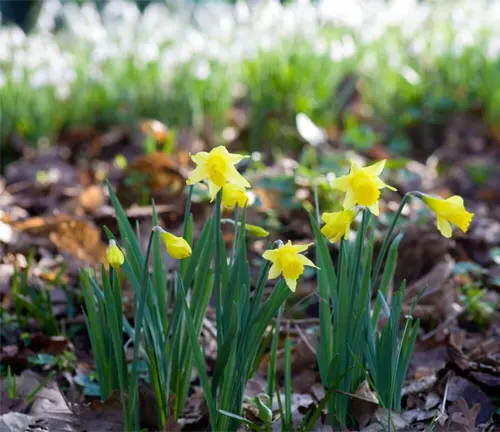
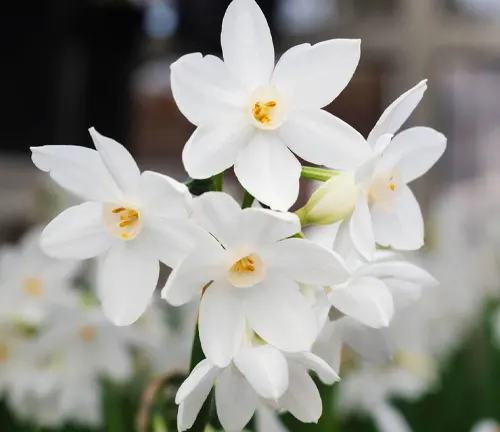
Narcissus Tazetta (Paperwhite)
Known for its highly fragrant clusters of white flowers, Paperwhites are popular for indoor forcing and warm winter gardens. This species is characterized by multiple flowers on each stem and is native to the Mediterranean region.
Narcissus Poeticus (Poet’s Daffodil)
Recognizable by its white petals and a small, red-edged, yellow cup, the Poet’s Daffodil is celebrated for its exquisite fragrance. It’s one of the last daffodil varieties to bloom, signaling the end of the spring flowering season.
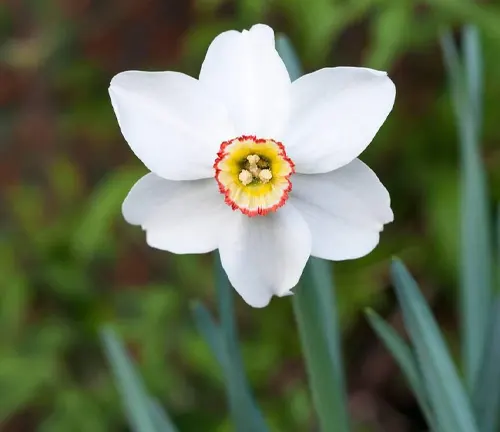

Narcissus jonquilla (Jonquil)
Jonquils have small, fragrant, yellow flowers with narrow, reed-like leaves. They often bear multiple flowers per stem and are native to Spain and Portugal. The term “jonquil” is sometimes used in North America to refer to any small-cupped or multi-flowered daffodils.
Narcissus cyclamineus (Cyclamineus Daffodil)
This species is distinguished by its swept-back petals, resembling the wings of a cyclamen. The flowers are usually yellow and appear perched atop slender stems. It’s native to Portugal and Spain and is appreciated for its unique shape and early bloom time.
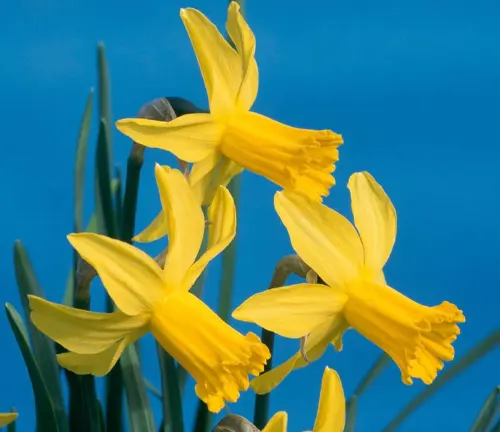
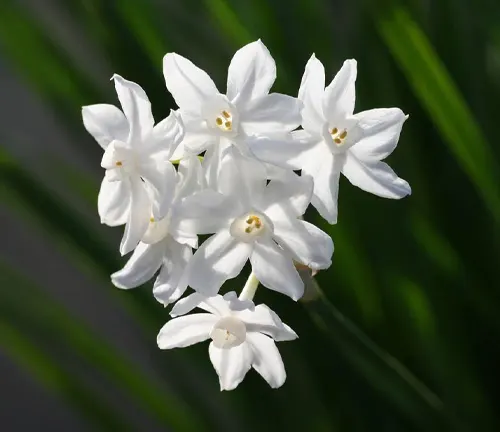
Narcissus Papyraceus (Paper Daffodil)
Another species often referred to as “Paperwhite,” this Narcissus is known for its pure white, fragrant flowers that are commonly forced indoors. It’s native to the western Mediterranean region.
Narcissus Triandrus (Angel’s Tears)
Angel’s Tears is a delicate species with hanging flowers and two to three blooms per stem. The petals are white or pale yellow, and the cups are usually a deeper shade. It’s native to Spain, Portugal, and France.
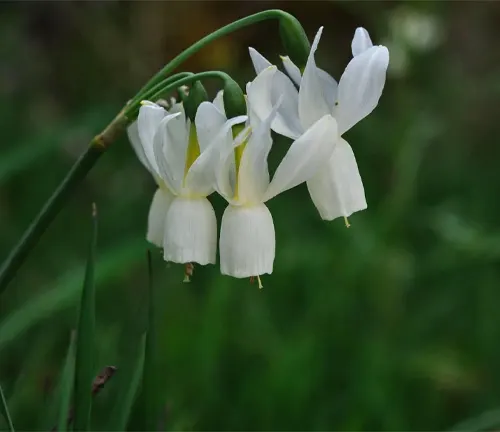
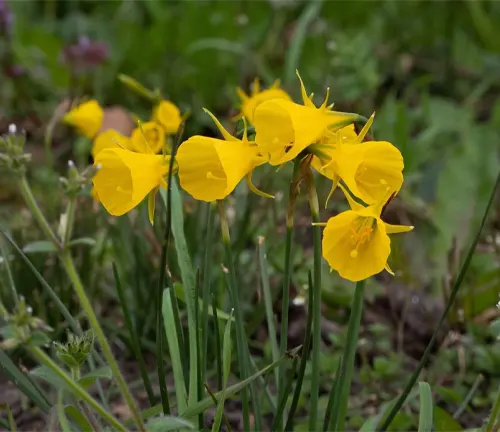
Narcissus Bulbocodium (Hoop Petticoat Daffodil)
Notable for its funnel-shaped, yellow flowers and thin, grass-like leaves, the Hoop Petticoat Daffodil is native to western and central Mediterranean regions. It’s sought after for its distinctive shape and small size.
Narcissus Obvallaris (Tenby Daffodil)
Native to Wales, the Tenby Daffodil is a robust species with bright yellow blooms. It is a symbol of Wales and grows wild in some areas of the country.
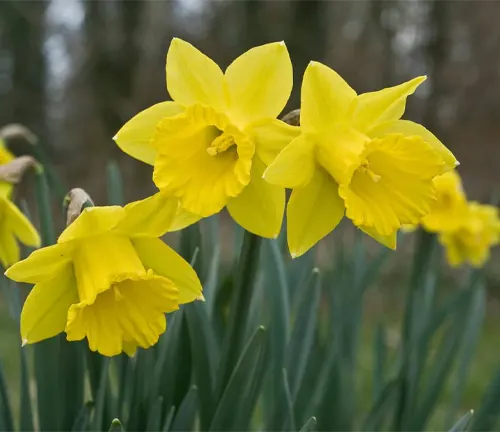
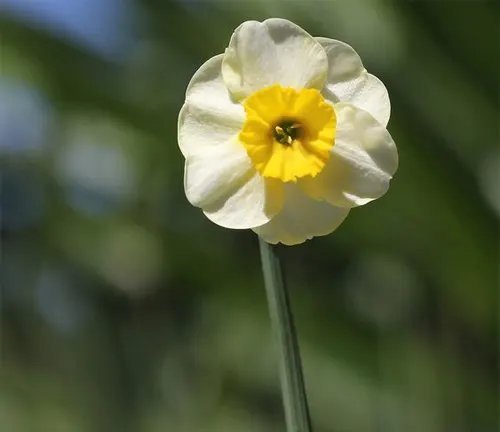
Narcissus Dubius (Dubious Daffodil)
Known for its delicate, small white flowers with a pale yellow cup, the Dubious Daffodil is native to the western Mediterranean. It’s admired for its elegant and understated appearance.
Frequently Asked Questions (FAQs)
1. What is a Narcissus plant?
A Narcissus plant, commonly known as a daffodil, is a type of flowering perennial that belongs to the Amaryllidaceae family. It’s celebrated for its vibrant, showy flowers that signal the arrival of spring.
2. When do Narcissus plants bloom?
Narcissus plants typically bloom in early spring, but some varieties can flower in late winter or late spring, depending on the climate and species.
3. Are Narcissus plants easy to care for?
Yes, Narcissus plants are relatively easy to care for. They prefer well-drained soil and partial to full sunlight. Once established, they require minimal maintenance and can thrive with basic watering and occasional feeding.
4. Can I grow Narcissus plants in pots?
Absolutely! Narcissus plants, especially smaller species and cultivars, can be successfully grown in pots. Ensure adequate drainage and place them in a sunny spot for best results.
5. How long do Narcissus flowers last?
The bloom time of Narcissus flowers can vary but generally lasts for about 6 weeks in the spring. Deadheading spent flowers can encourage a longer blooming period.
6. Do Narcissus plants come back every year?
Yes, Narcissus plants are perennials, meaning they return year after year. They’re bulbous plants that go dormant after flowering and come back the following spring.
7. What colors do Narcissus flowers come in?
Narcissus flowers primarily come in shades of yellow, white, and orange. Some varieties may have accents of pink, red, or green.
8. Are Narcissus plants resistant to pests and diseases?
Narcissus plants are relatively resistant to pests and diseases, but they can occasionally be affected by bulb rot if planted in poorly drained soil. They are also known to be deer-resistant.
9. Can Narcissus plants be used in landscaping?
Definitely! Narcissus plants are excellent for landscaping, adding color and fragrance to borders, under trees, or in naturalized woodland areas. They work well in both formal and informal garden settings.
10. How do I propagate Narcissus plants?
Narcissus plants are commonly propagated by dividing and replanting their bulbs after the foliage has died back. This typically happens in late summer or early fall. They can also be grown from seeds, but this method takes longer for plants to mature and flower.


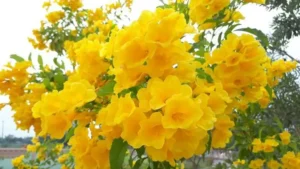
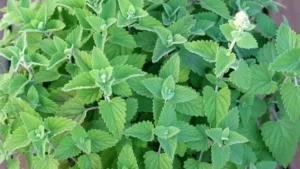
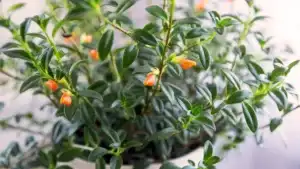
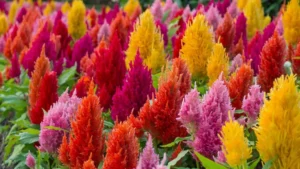

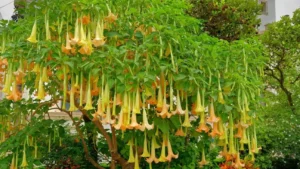




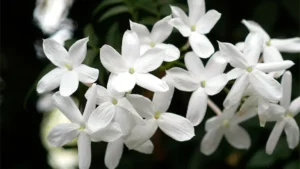
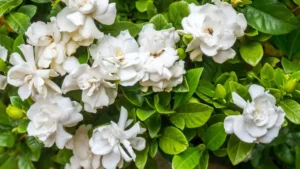
Leave your comment